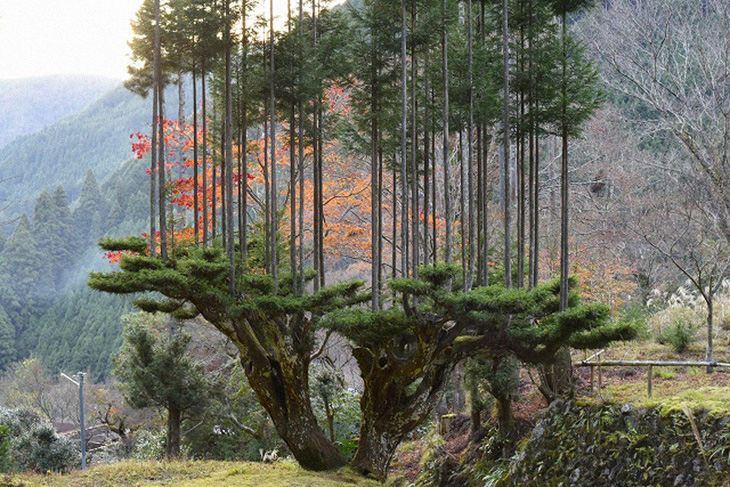When it comes to innovation and technology, you have to give credit to the Japanese. They have always looked for ways to produce goods at minimal cost without ever sacrificing quality. This same belief applies to their forestry technique.
When it comes to building houses, contractors often resort to the one method that has stripped Mother Nature of her precious trees – deforestation. Japan, however, has used an ancient technique that has managed to make use of high-grade lumber without the need to chop down trees.
For people who live in the other parts of the globe, they always viewed Japan as a fascinating place. Tourists have witnessed the amazing blend of modernity and ancient tradition. The people’s beliefs are deeply embedded in their culture. Hence, they’ve made an effort to marry nature and urbanism, create a beautiful harmony that seems only unique to them. Hence, those who visit the country often leave in awe at what they’ve witnessed. From its colorful feudal traditions to its contemporary lifestyle, Japan has been fully romanticized by those who wish to visit this fine place.
However, there’s also more to Japan than meets the eye. Look beyond the superficial and see what the “Land of the Rising Sun” is truly about. The people are just as rich and their cultured ways are just so fascinating. It is truly a place like no other.
Japan is diverse and their traditions date back to thousands of years ago. While time has passed and the world has evolved, practices, cultures, and beliefs stand strong. Technology may be what Japan is most known for, but time-honored customs still hold true for many.
Yes, architecture has truly come a long way, but one popular Japanese art form that the rest of the world has appreciated is the art of growing bonsai trees. This technique involves producing and growing tiny trees that mimic the characteristics of fully-grown conifers, bushes, and shrubs. Yet, that’s not the only thing that the others have yet to learn about. This is just the tip of the iceberg when it comes to Japanese horticultural and arbor mastery.
Another tradition that the world needs to learn more about is the daisugi. This technique shares specific features to the art of bonsai making. However, the outcome is extremely different.
The ancient forestry technique goes way back to 14th century. It makes use of the Kitayama cedar tree or kitayama sugi. This place is a densely populated forest found in the flourishing and scenic mountains found in the northern portion of Kyoto. The wood found in these immaculate cedars has been used since time immemorial when in terms of architecture. These are oftentimes found in traditional wood roofs and beams in homes and famous tea rooms.

What makes the daisugi technique interesting is the fact that Kitayama cedars stand completely straight. They don’t have knots found in your typical wild trees. You may wonder why. This is because the daisugi technique, like bonsai, involves heavily pruning the mother tree so that the narrow saplings of the wood shoot upwards rather than the other way around. When this is done, what you get is a distinct cedar that is squat and knotted up much like a candelabra. Upon closer look, you’ll see the wood teeming with smaller trees. Hence, it’s almost like a forest growing on top of the large cedar tree that’s found underneath.
How did the Japanese come up with this unique method? The area is perfect for it because there’s an absence of flat land in the Kitayama region. Hence, the arborists had to come up with a new way to grow and harvest a large amount of wood in an area where viable land is quite difficult to find. This method also allows local masters of arboriculture to harvest the cherished daisugi cedar every twenty years while the base tree can live for centuries to come.

Over the generations passed, woodcutters had harvested mature lumber while promoting newer shoots. Hence, each cedar looks like a unique artwork of its own. Unfortunately, demand for daisugi cedar is no longer as popular. That’s because in the past century, new architectural and building techniques are less reliant on this type of lumber.
Because the cedars have been left to grow on their own, the trees have managed to create an amazing display of enormous trunks that have gnarled limbs. These cover the entire northern hillside of the mountain. The result? An almost otherworldly forest that came straight from a magnificent fantasy novel. The difference is that these trees are real and that they have been shaped by the economic needs of imperial Japan’s thriving ancient capital. Truly a perfect and breathtaking mix of ancient aesthetic brilliance and of fascinating culture.
What are your thoughts? Please comment below and share this news!
True Activist / Report a typo


